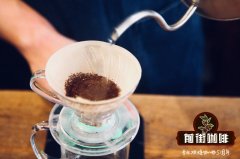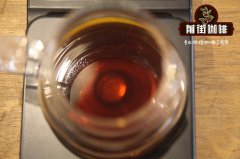Starbucks Papua New Guinea Plateau Coffee Bean Variety Flavor Taste Story

Professional coffee knowledge exchange more coffee bean information please follow the coffee workshop (Wechat official account cafe_style)
Starbucks ®single region series-Papua New Guinea Highland Coffee beans
STARBUCKS ®SINGLE ORIGIN SERIES-PAPUA NEW GUINEA HIGHLANDS
Starbucks ®
Single origin series
Papua New Guinea Plateau Coffee beans
PAPUA NEW GUINEA HIGHLANDS
Asia / Pacific
Balanced herbal taste, accompanied by cocoa flavor tail
Deep baking
Thick and full-bodied
Processing method (washing method)
Altitude: 1300-1900 m
Acidity: medium
Mellow degree: heavy
Match with food
Dark chocolate, cheese Danish, breakfast food
Coffee variety
100% Arabica coffee beans
Tibika, Arusha (Arusha)
The geographical producing area is the embodiment of flavor.
Asia / Pacific region
Mellow, sweet, smooth, with herbal and earthy aromas.
Coffee producing areas in the Asia / Pacific region include the Indonesian Islands, East Timor, South Asia and Papua New Guinea. This vast area spans a variety of climates and terrain, and some of the most distinctive coffees in the world can be found here. With the exception of washed coffee from Papua New Guinea and East Timor, most of the coffee we buy from the region is processed in a "semi-washed" way and is famous for its mellow and spicy flavor. Semi-washed coffee has mild acidity and herbal characteristics. Although some of the world's top 10 coffee producing countries are located in the Asia / Pacific region, Starbucks does not buy coffee from all of these regions for a variety of reasons. (Vietnam is the second largest coffee producer in the world, but its main harvest is made up of Robbins coffee beans, which we do not buy.)
* robusta is a highly adaptable tree, not the flavor in the cup. )
The processing method will affect the overall flavor of coffee.
Washing method
Water washing helps to improve the acidity or aroma of coffee and gives it a soft and refreshing aftertaste.
As the name implies, this method mainly depends on the use of water. This is especially true when the mucus layer is dissolved in a large water tank during fermentation. As a result, cleaner coffee beans and cup flavors with higher acidity can be obtained. In fact, fermentation strengthens the acidity of coffee, which is why Latin American coffee (mostly washed) is often famous for its remarkable acidity.
① collection: coffee berries will be transferred to a wet workshop where they are measured and placed in the collection tank.
② beating (de-fleshed): after the berries have been washed, they are fed into a pulp-removing machine. By rubbing, the pulp on the coffee beans can be fundamentally removed, which is waiting to be fermented, and the pulp will be collected for composting.
③ fermentation: after the pulp is removed, the coffee beans will be sent to the fermentor and fermented for 18-36 hours. In the early stages of fermentation, the enzyme breaks down the mucus so that the pulp can be removed. After fermentation, the coffee beans remove all residual mucus through the cleaning channel.
④ drying: coffee beans are dried on a drying table in a large outdoor yard, or by using a mechanical drum dryer. When drying outdoors, coffee beans need to be raked and turned constantly to ensure that they are evenly dried in the sun, a process that takes 5-7 days.
⑤ shelving: dry coffee beans are bagged and transferred to the warehouse for two months, while coffee beans continue to form flavor.
⑥ peeling: peel the coffee after shelving, the last step is to remove the peel around the outside of the coffee bean.
Coffee variety is an important component of flavor and quality.
Varieties need to be able to match the altitude, microclimate and agronomic methods of planting in order to provide quality and yield to producers. There are hundreds of different varieties of coffee, and the quality of coffee is determined by region, environment, taste and yield.
Common coffee varieties at Starbucks:
Tibica, Bourbon, Kaddura, Kaduai, Rosa
Tiebika
Tibika grows well in all kinds of terrain. Its output is higher than that of bourbon, but it is still famous for its cup test quality. However, it is extremely vulnerable to diseases, bacteria and insects.
Arusha (Arusha)
Arusha is the most common bourbon subspecies in Tanzania and Papua New Guinea.
Fairness norms for coffee and growers
C.A.F.E. Practices
In 1988, we began to work with the world-renowned non-profit organization Conservation International (CI) to create a code of ethical procurement, namely C.A.F.E. (coffee and grower's Fair approach) Practices. C.A.F.E. Practices is a coffee procurement guideline to ensure that we purchase high-quality coffee grown in a socially and environmentally responsible manner.
Four elements of C.A.F.E. Practices:
Starbucks gives priority to buying coffee from growers and farmers who implement C.A.F.E. Practices and meet established standards in four directions of the program:
Product quality-all coffee beans must meet Starbucks quality Arabica coffee standards.
Economic responsibility-transparency is very important. Our suppliers are required to submit payment vouchers for raw (unroasted) coffee beans throughout the coffee supply chain, including receipts indicating the amount of coffee paid directly to the grower.
Social responsibility (assessed by third parties)-growers and farmers must have measures that can improve safe, fair and humane working conditions for reference. These include the protection of the rights of workers and the provision of adequate living conditions. Minimum wage requirements must be met and child labour / forced labour and discrimination must be addressed.
Environmental leadership (assessed by third parties)-in the process of growing and processing coffee, good environmental measures must be put in place to manage waste, protect water quality, save water and energy, protect biodiversity and reduce the use of agricultural fertilizers.
Third-party inspection agencies inspect farms and mills in accordance with C.A.F.E. Practicess. We work with the Scientific Certification system (SCS) to maintain an efficient and reliable inspection process.
Starbucks ®Coffee Stamps
Relevant information is excerpted into
The story of coffee beans
Incorporating the local customs of the producing area into the packaging design, the Papuan hornbill, also known as Kokomo, is one of the largest birds in the area, with bright colors and strange shapes. Its splendor is the same as this elegant and unique coffee.
The island of Papua New Guinea is mainly Melanesian. They are divided into different tribes, of which there are about 800 tribes and more than 700 languages. The music associated with so many languages is also very diverse and rich. Music and dance festivals are held every year for several days.
It is not easy to buy this high-end coffee with obvious quality and hierarchy in our store. Because these coffee farmers don't have cars and can't even transport coffee beans to processing plants on their own, we need to buy coffee beans from coffee growers in remote mountains and assist in transportation.
Papua New Guinea
It's called
[the Last Kingdom]
For Starbucks, coffee beans from Papua New Guinea are one of the most valuable coffee beans, because we have been supplying coffee beans from Papua New Guinea since the opening of the Starbucks Pike market. As our single-origin series of coffee, it is also representative, roasted sweetness, Wei Wei's spices and herbal levels of fragrance. This coffee participated in the blending of our anniversary, Xianglong comprehensive and three-zone integrated coffee beans, and this time we decided to present the uniqueness of the origin of this coffee as a single-origin series.
Papua New Guinea's fertile volcanic soil, mild tropical climate and altitude create a perfect mix of herbaceous flavors, juicy acidity and sweetness.
Deep baking
Acidity
Alcohol degree
Producing area
Asia / Pacific
Treatment method
Washing method
The flavor of food suitable for matching
Delicious breakfast snacks, Danish cheese, dark chocolate
Altitude
Between 1300 and 1900 meters
Variety
Typica and Arusha
Papua New Guinea coffee was first introduced by Dutch sailors in the Rigo Rico region in the late 18th century. In 1908, Papua New Guinea had 180 acres of land to grow coffee, and by 1970 Papua New Guinea could produce 460000 bags of coffee. Until today, the annual output of coffee in Papua New Guinea has reached 90 to 1.2 million bags. Papua New Guinea is mainly divided into four provinces, including the eastern Highlands, Momase, New Guinea Islands and Southern. Located in the east of the Indonesian archipelago, Papua New Guinea is mainly highland and has a model of large manors / farms and small farmers, growing a variety of coffee varieties. The coffee flavor of Papua New Guinea is very different from that of other Asian regions such as Indonesia, South Asia, India or the Pacific Islands. compared with Indonesian beans (Sumatra, Sulawesi) that are mostly semi-washed (wet stripped), washed Papua New Guinea coffee always has brighter and more acidity, similar to the flavor of Central American coffee.
Important Notice :
前街咖啡 FrontStreet Coffee has moved to new addredd:
FrontStreet Coffee Address: 315,Donghua East Road,GuangZhou
Tel:020 38364473
- Prev

An introduction to the types and characteristics of Coffee in Coffee Shop
Professional coffee knowledge exchange more coffee bean information please follow the coffee workshop (Wechat official account cafe_style) Australia's streets are full of coffee shops, come to Australia to taste a cup or two of coffee. There are many kinds of coffee. Let's get to know coffee through the following short video. How to order coffee in Australia? In Australia, there are many kinds of coffee. For example
- Next

Starbucks Papua New Guinea Plateau Coffee beans how to cook moderately roasted coffee beans to taste good
Professional coffee knowledge exchange more coffee bean information please follow Coffee Workshop (Wechat official account cafe_style) Starbucks single production area series-Papua New Guinea Highland Coffee beans STARBUCKS SINGLE ORIGIN SERIES PAPUA NEW GUINEA HIGHLANDS flavor description: Papua New Guinea fertile volcanic soil, mild tropical climate and sea
Related
- Detailed explanation of Jadeite planting Land in Panamanian Jadeite Manor introduction to the grading system of Jadeite competitive bidding, Red bid, Green bid and Rose Summer
- Story of Coffee planting in Brenka region of Costa Rica Stonehenge Manor anaerobic heavy honey treatment of flavor mouth
- What's on the barrel of Blue Mountain Coffee beans?
- Can American coffee also pull flowers? How to use hot American style to pull out a good-looking pattern?
- Can you make a cold extract with coffee beans? What is the right proportion for cold-extracted coffee formula?
- Indonesian PWN Gold Mandrine Coffee Origin Features Flavor How to Chong? Mandolin coffee is American.
- A brief introduction to the flavor characteristics of Brazilian yellow bourbon coffee beans
- What is the effect of different water quality on the flavor of cold-extracted coffee? What kind of water is best for brewing coffee?
- Why do you think of Rose Summer whenever you mention Panamanian coffee?
- Introduction to the characteristics of authentic blue mountain coffee bean producing areas? What is the CIB Coffee Authority in Jamaica?

